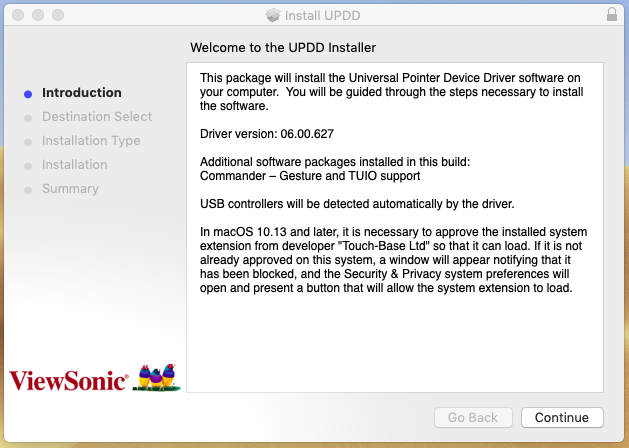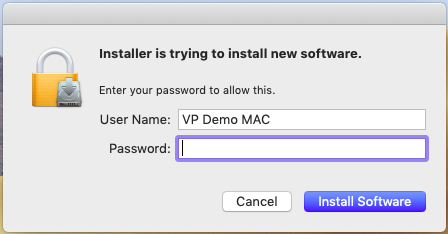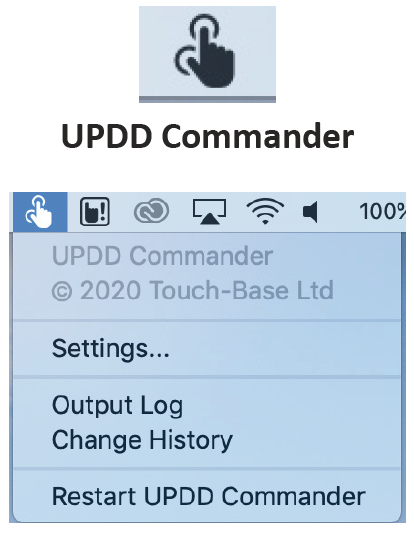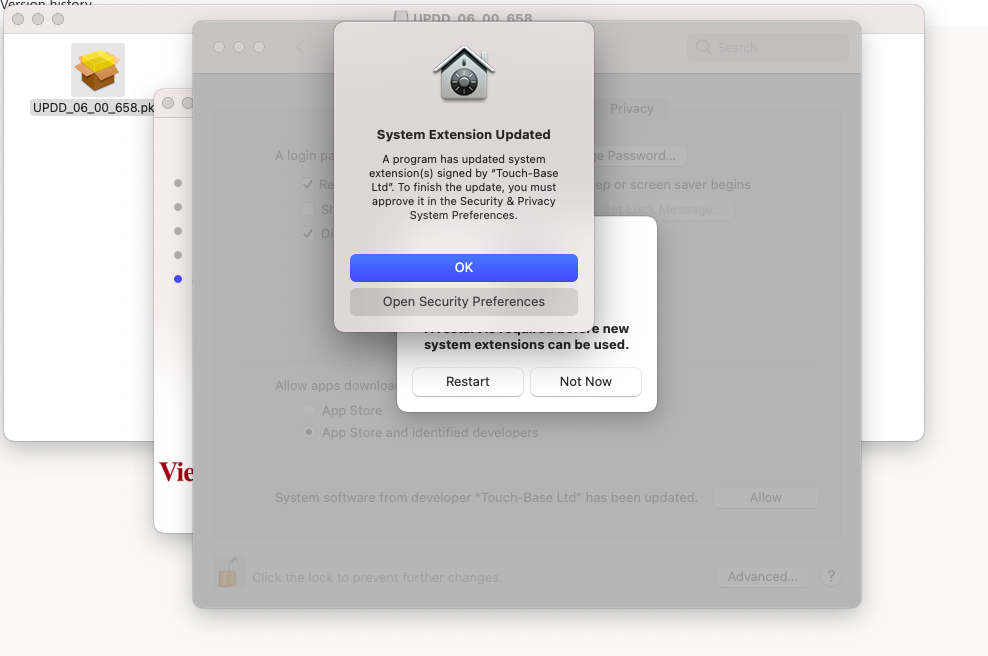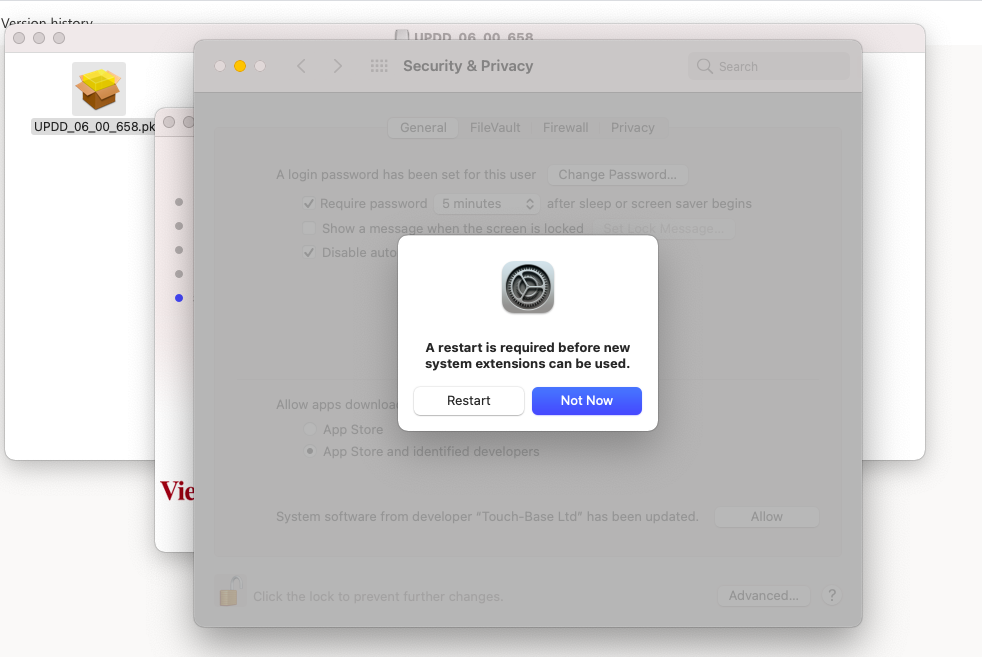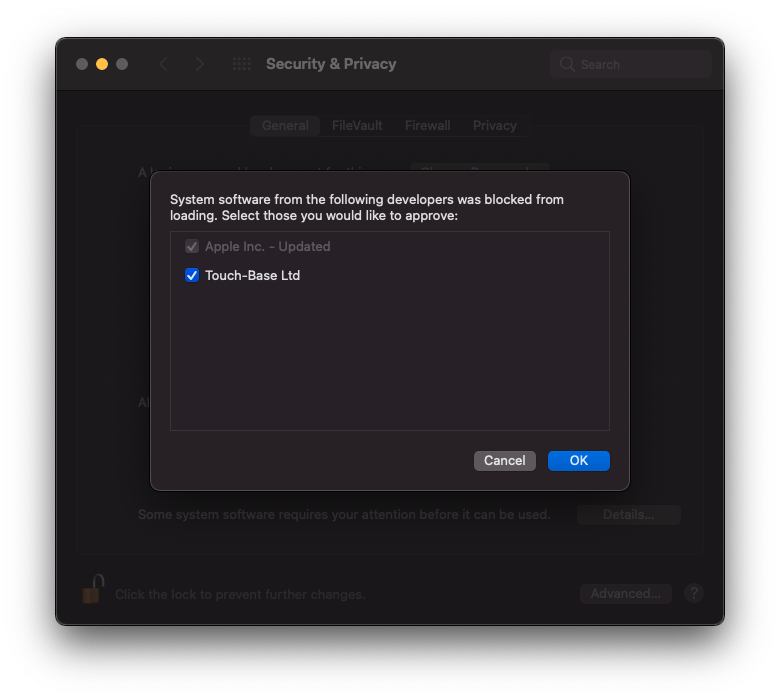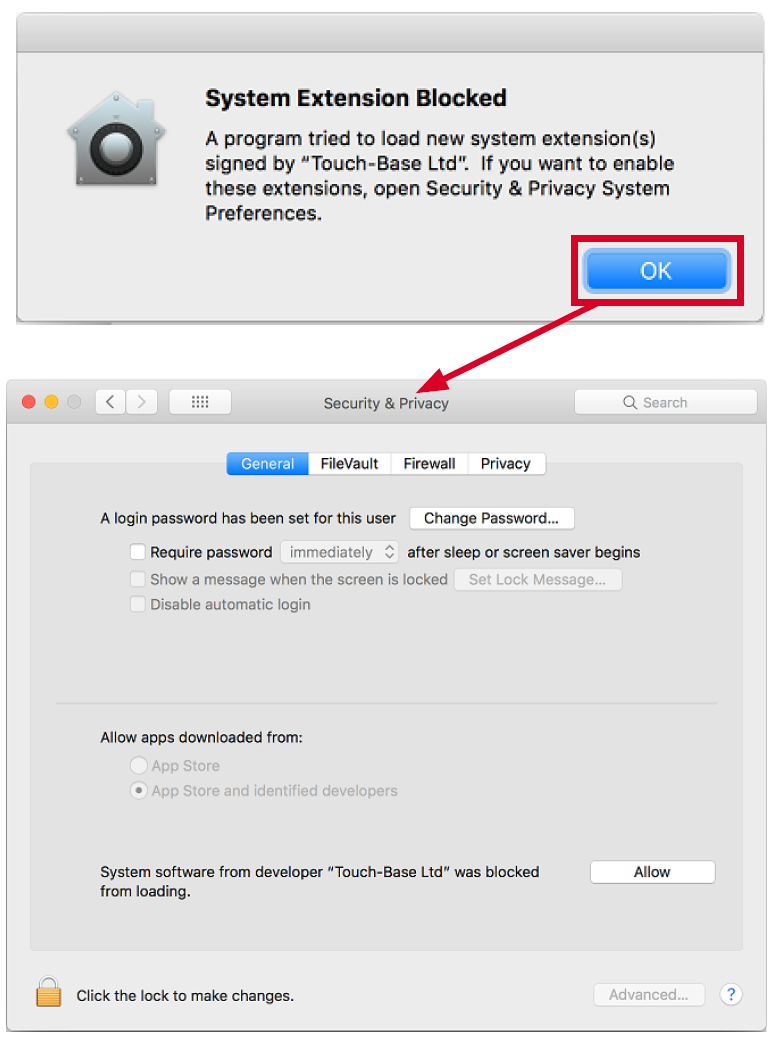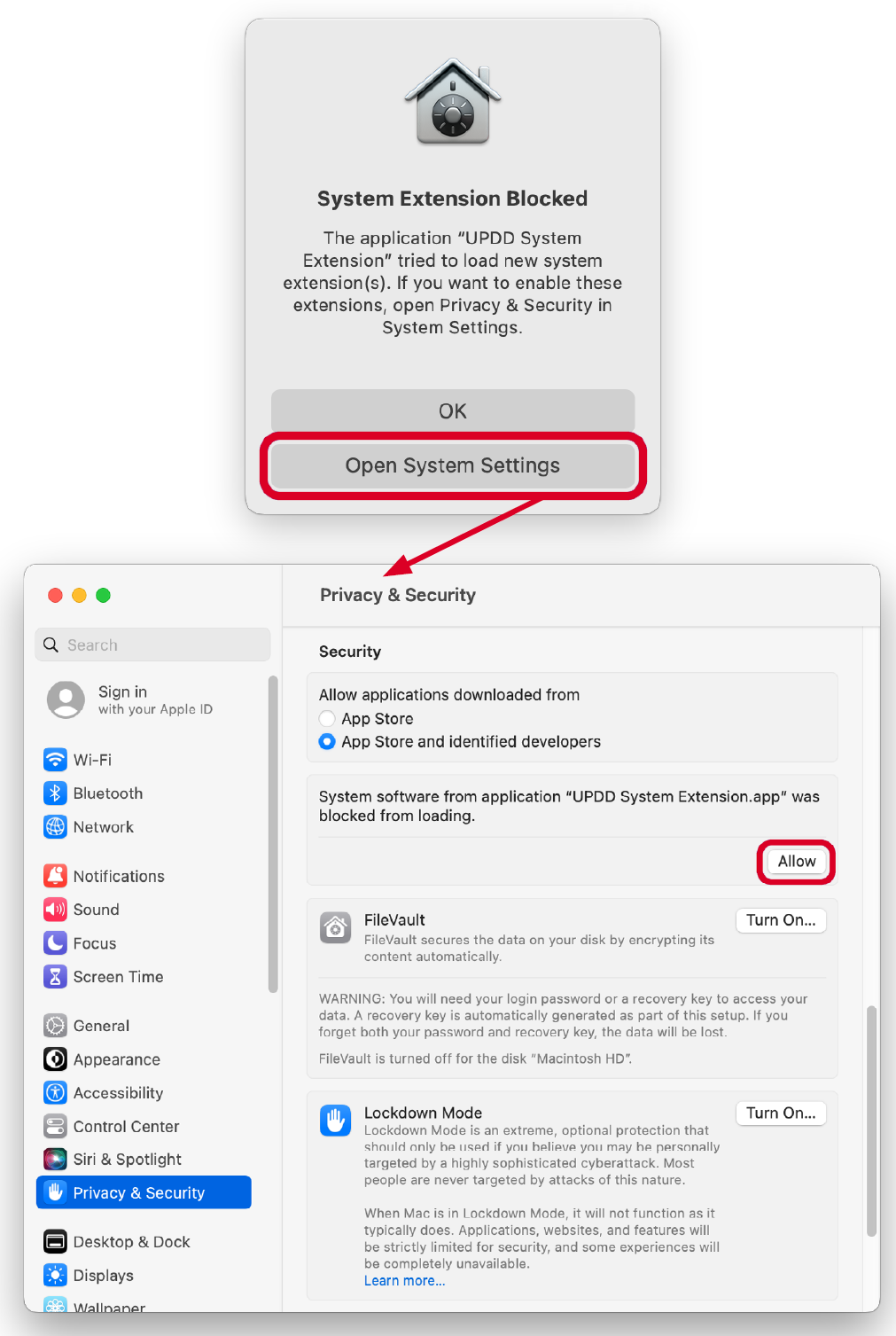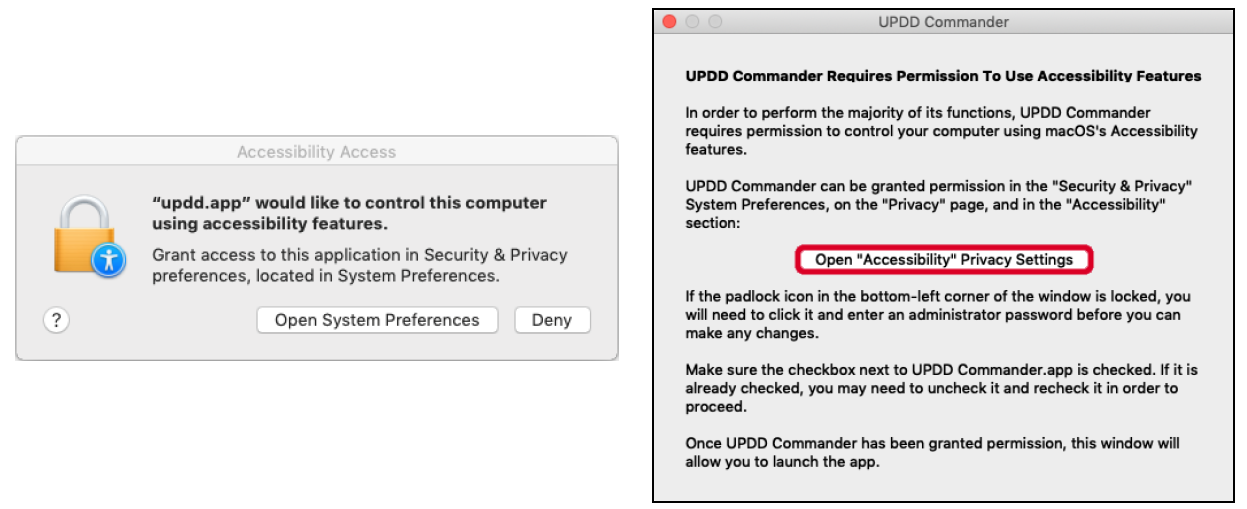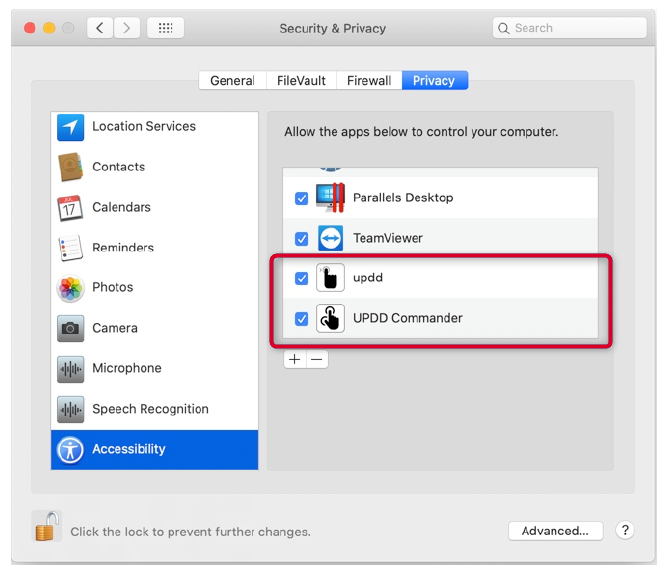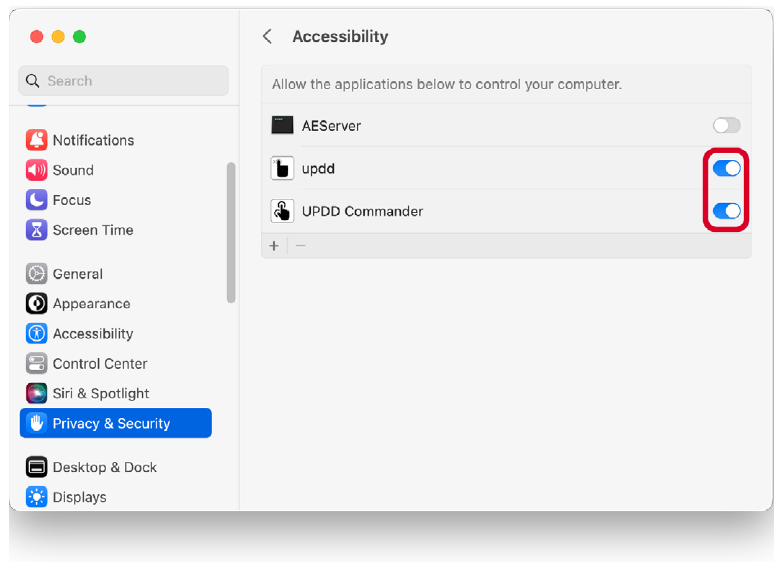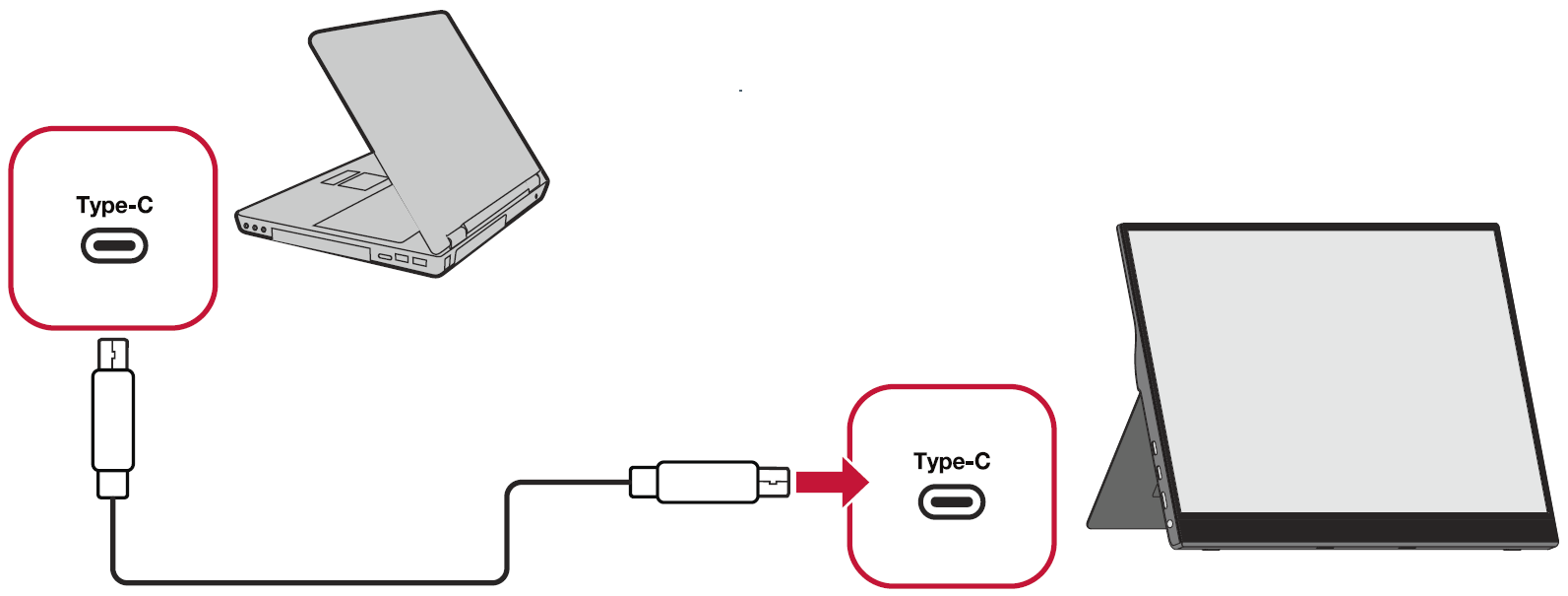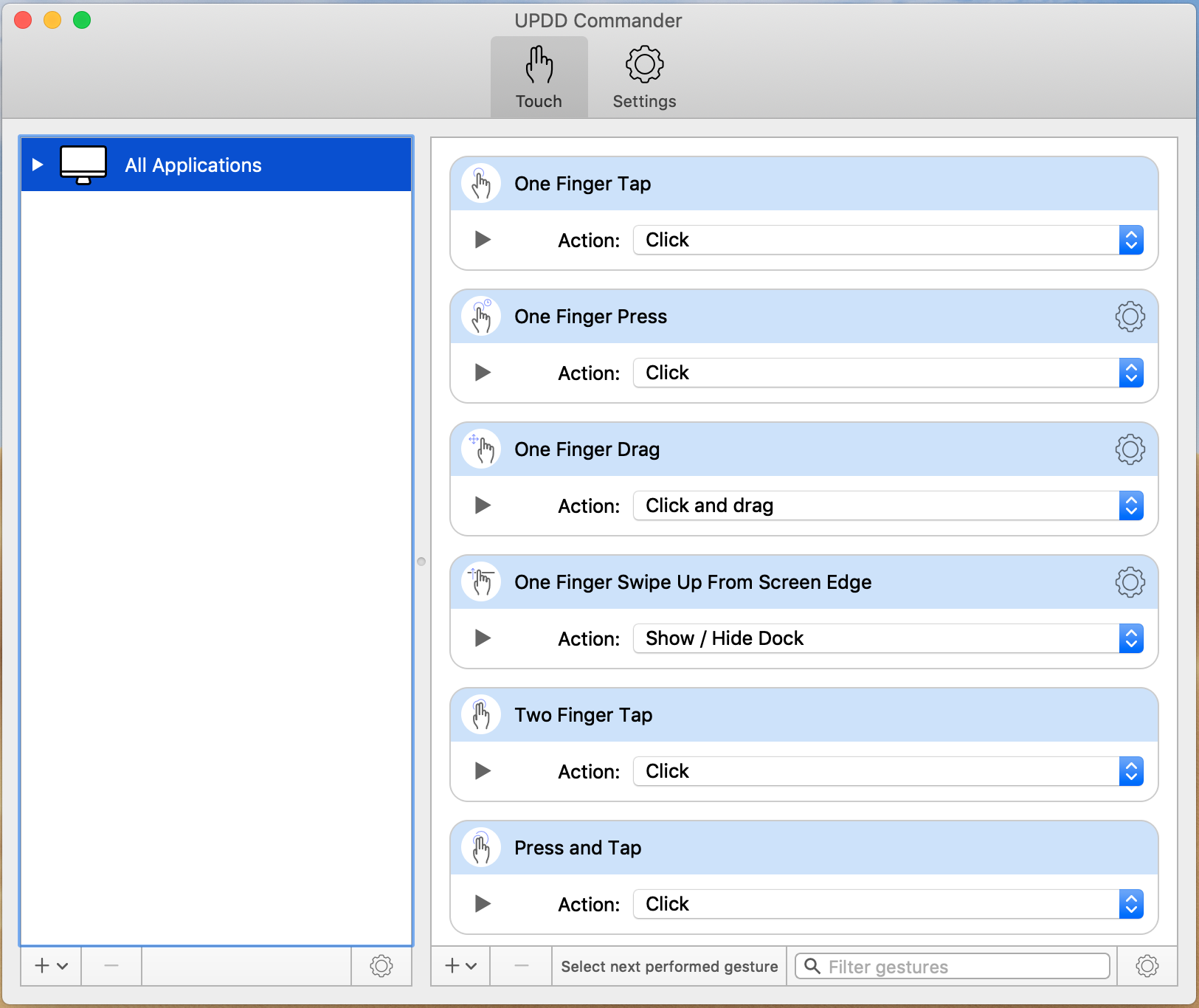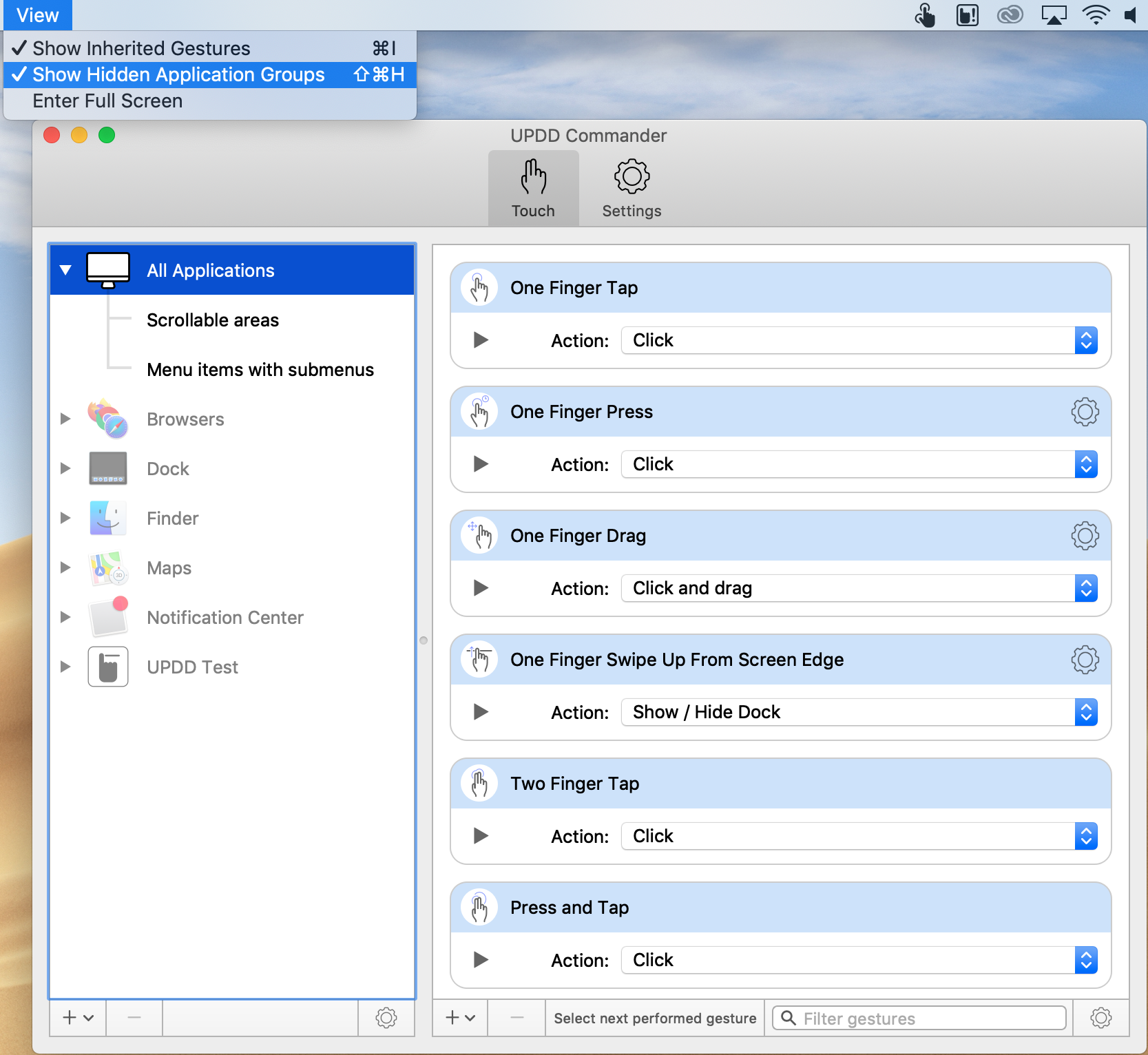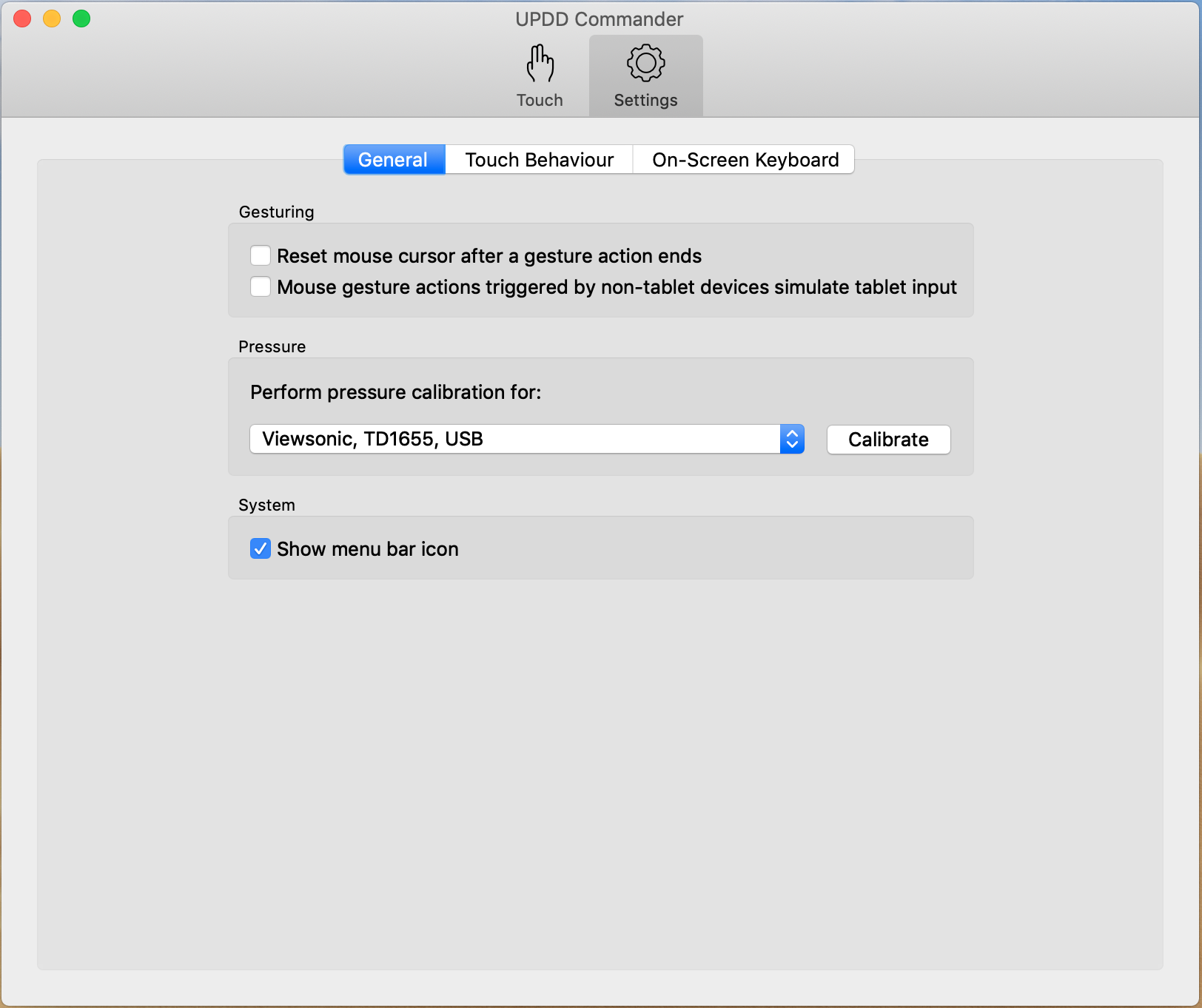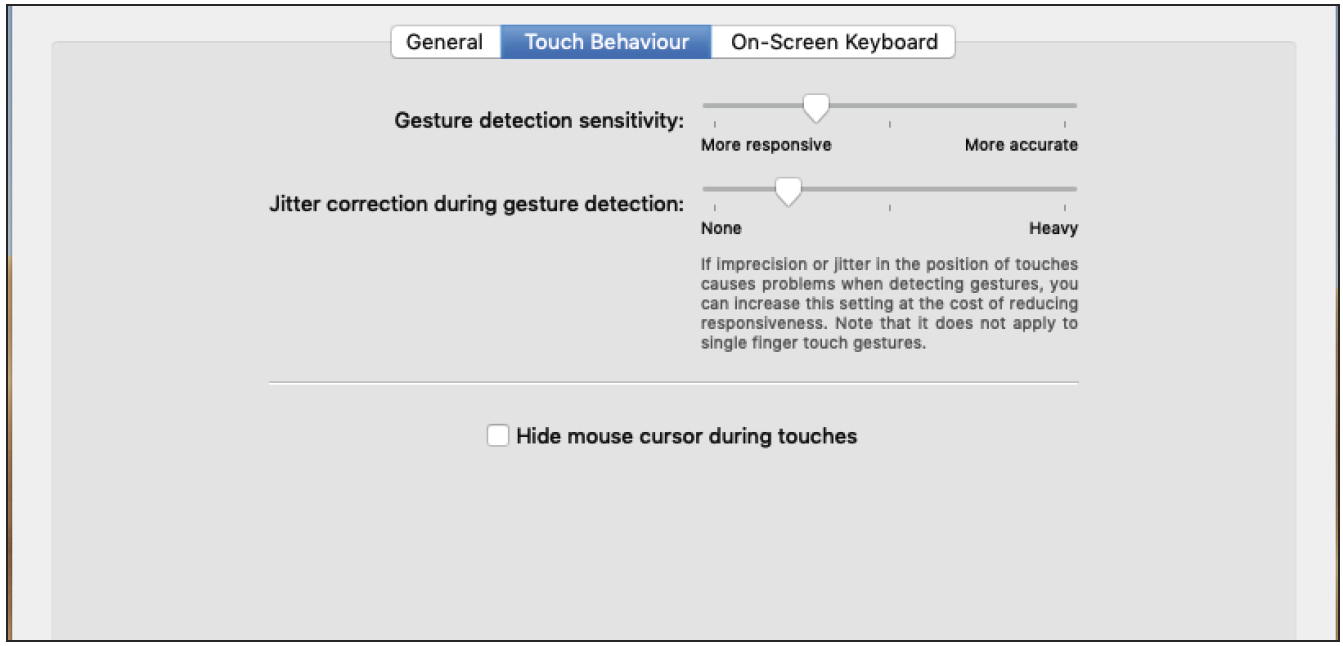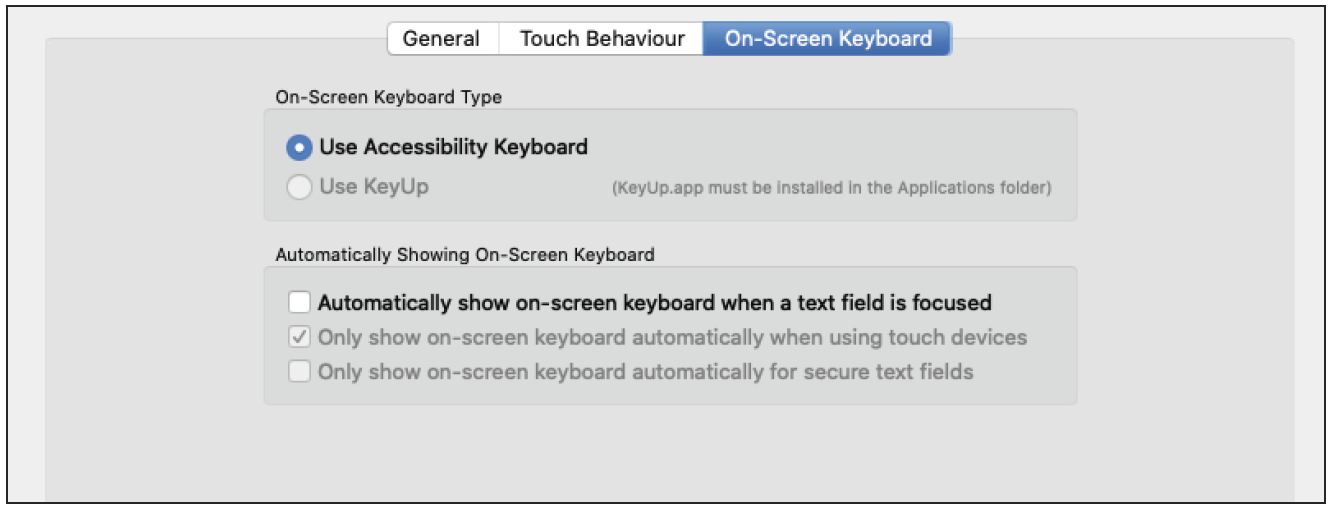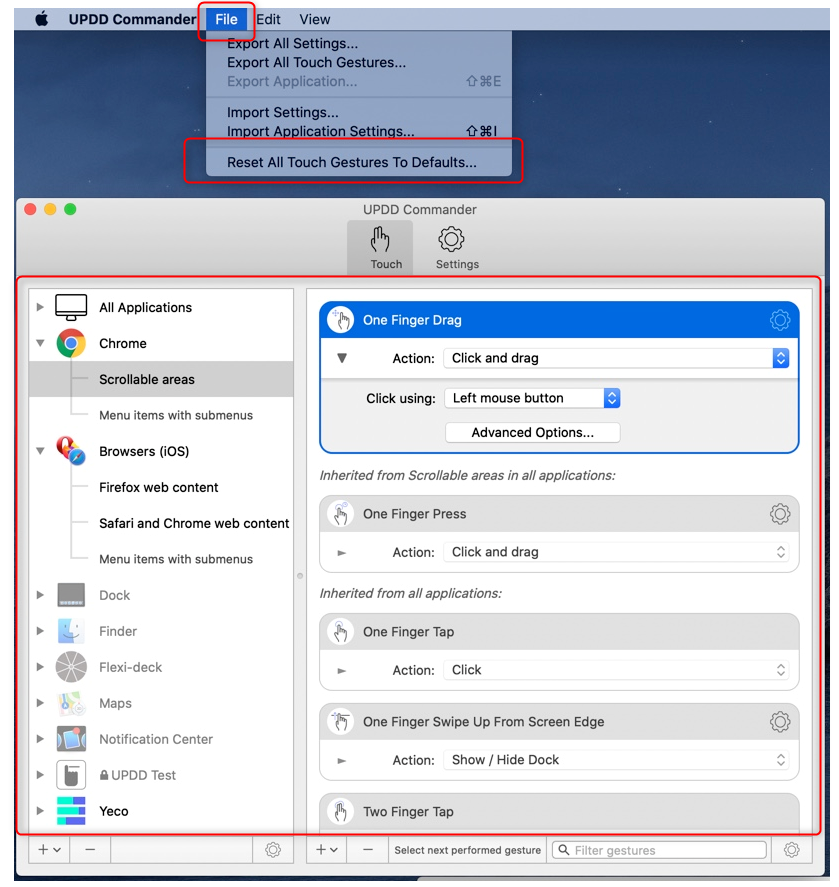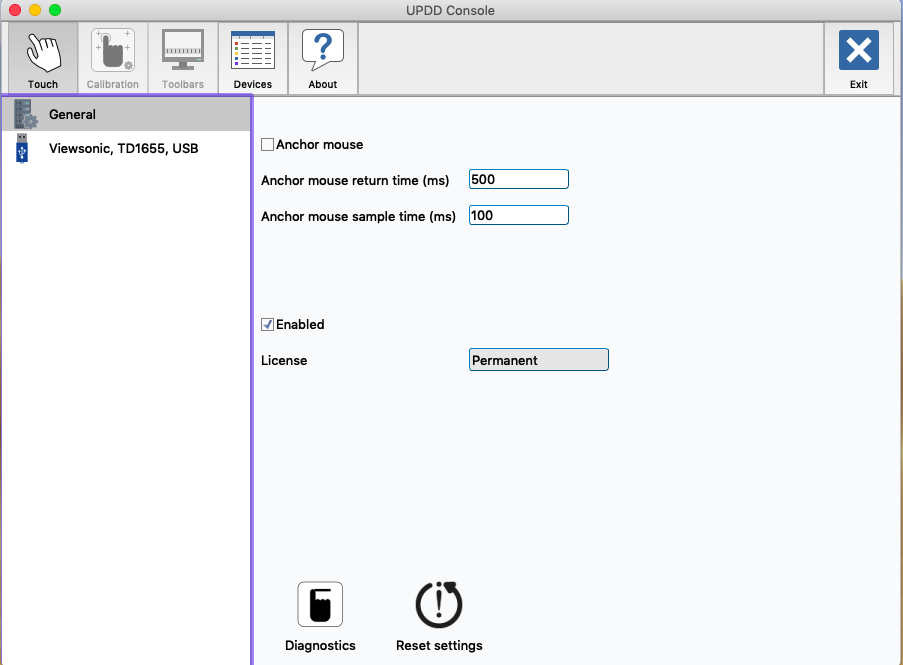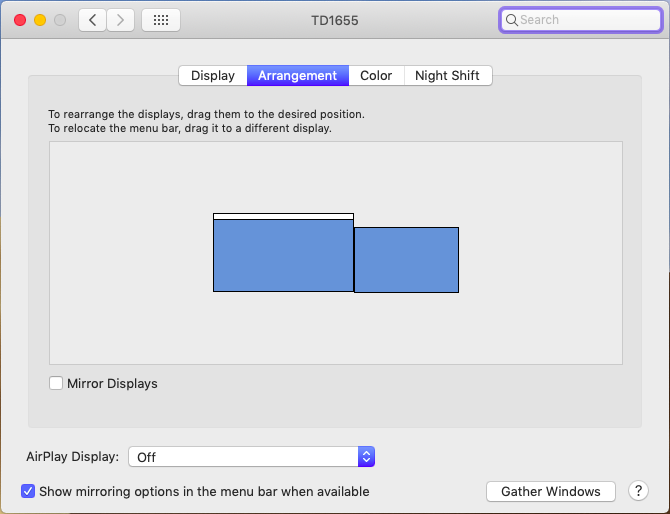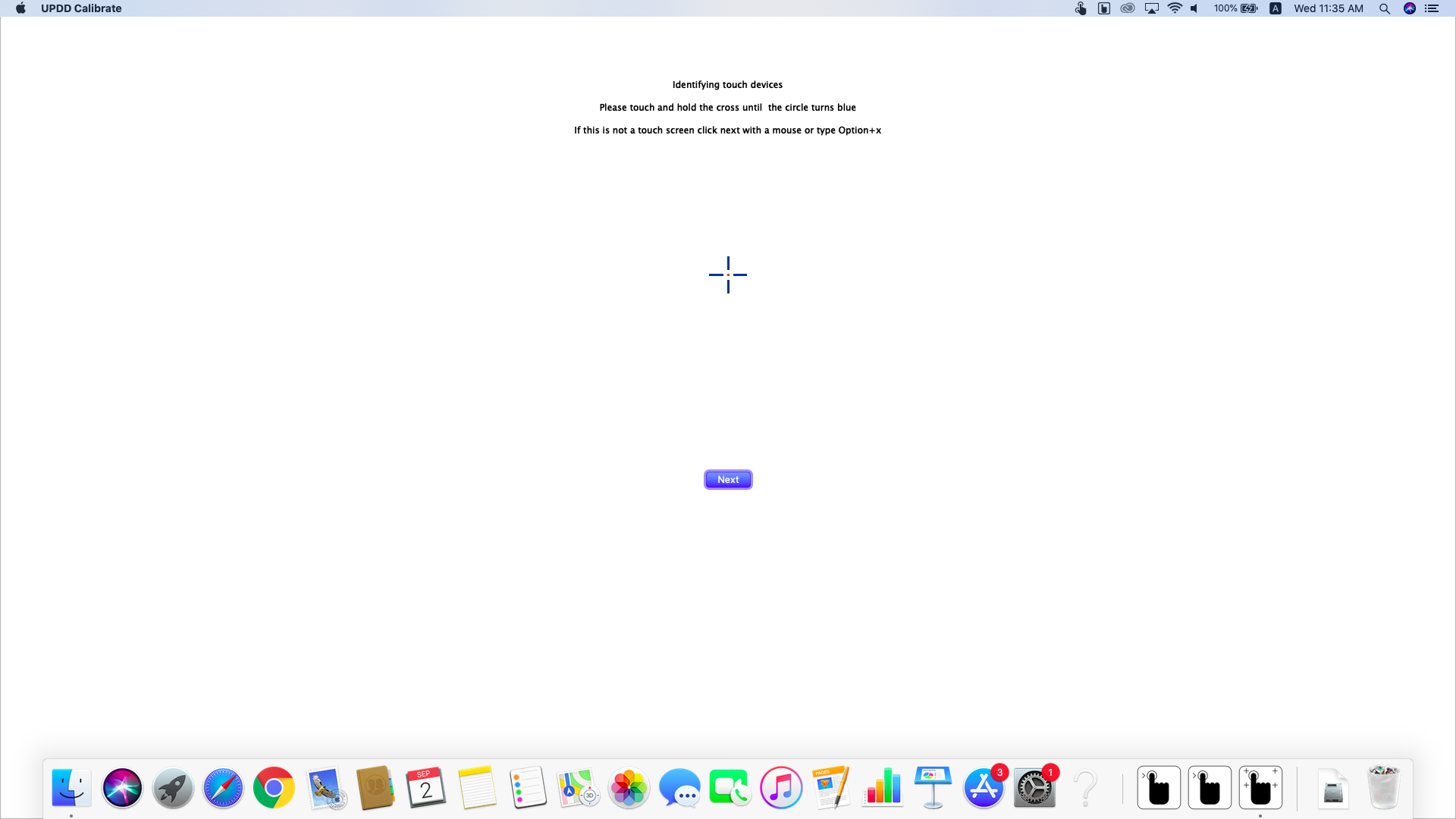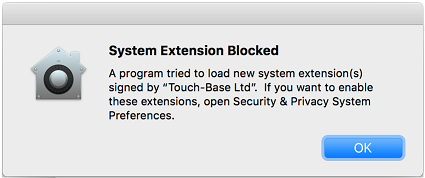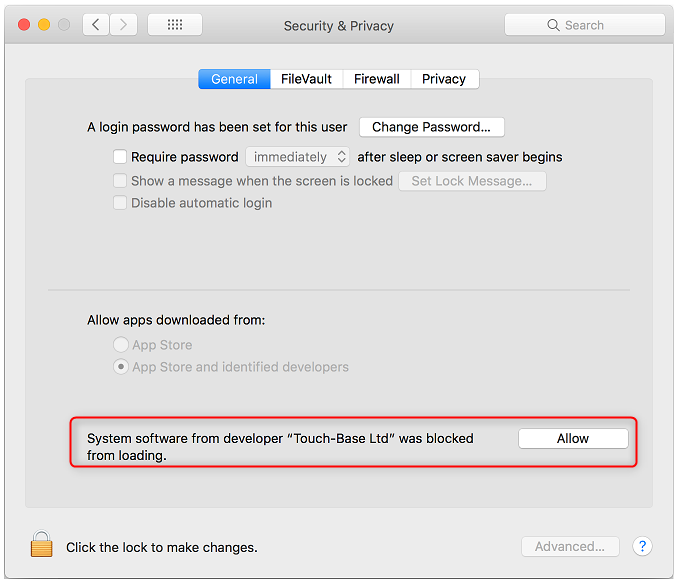vTouch Support
What is vTouch Support?
vTouch allows for touch feedback control for external monitors connected to a Mac.
The touch function relates to the processing of the touch events (tap, press, gestures, etc.) performed on the touch device. A common list of touch events and system actions are predefined and can be configured as suits.
Monitor Support
|
|
|
|
|
|
|
|
|
|
|
|
|
|
|
|
|
- NOTE: vTouch is a universal binary that works on both the Intel and Apple processors of MacBook and is available for MacOS 10.14 and above, including the latest macOS.
ViewBoard Display Support
|
|
|
|
|
|
|
|
|
Where to get vTouch Support
vTouch can be downloaded at the “Download” section of each TD display’s product page.
After the download completes, launch the setup file and follow the on-screen directions to install the software.
- Click the UPDD_06xx.pkg file to open the installation.
- Input your MacBook password to install the driver.
- Run the installation to complete the installation process.
- After a successful installation, there should be two (2) UPDD application icons shown on the top menu bar - UPDD Commander and UPDD Console.
Installing vTouch on Big Sur and Above (Ventura)
For Intel Systems
- Run the installer.
- Grant the kernel extension (kext) permission to load, but do not reboot.
- Grant both updd.app and UPDD Commander.app permission to use Accessibility features.
- Wait for the installer to finish and restart your system.
For Silicon (M1 chip) Systems
- Enter the macOS Recovery environment.
- Go to: Utilities > Startup Security Utility.
- Select your system, then click Security Policy.
- Click the button for Reduced Security.
- Check the box next to Allow user management of kernel extensions from identified developers.
- Click OK and enter your administrator password when requested.
- Restart your system after the UPDD installation has completed.
- NOTE:
- The reboot will likely be blocked if the installation is still running.
- You must retain the Reduced Security security level for the kernel extension to load in ARM processors.
- NOTE:
Installing UPDD in Big Sur (Monterey)
Below are the observed differences when installing UPDD kernel extension version.
These instructions refer to drivers created on or after 8th December 2020 that carry the new universal binary codeless kext.
Intel systems
The new codeless kext file caused kext load error 71 (an unknown error).
You still need to give manual permission to load the kext via the “Allow” button in the Security and privacy dialog to approve the installation of the UPDD software.
Silicon systems
In our initial tests with the new codeless version of the kext we were not asked for permission to load the kext nor required to reboot for the kext to load.
However, your system may still ask to grant permission to load and require a reboot as shown below.
If this is required, and you have not granted permission, Kext error 27 will likely be shown in the UPDD Console. You have to reduce system security to allow the kext to load.
Installing UPDD on macOS 10.13~12.x and macOS 13.x
Below are the observed differences between macOS 10.13~12.x and macOS 13.x when installing the UPDD kernel extension version.
If installing on macOS 10.13 or above for the first time or if the extension has not been previously approved the extension will need to be approved.
- NOTE: When installing on macOS 13.x you can safely dismiss the below notification:
For macOS 10.13 and above, clicking OK will automatically open the General tab of the Security & Privacy settings. Click the lock to make changes then Allow.
For macOS 13.x clicking Open System Settings will automatically open the appropriate System Settings section. Click Allow to grant permission to the extension.
During the installation you may be asked to grant permissions for some of the driver’s processes.
- NOTE: In macOS 10.7/10.8 the dialog box will be different.
Clicking the ‘Open ...’ option will launch the Securities & Privacy dialog box as shown below, showing the UPDD components that have been granted permission. The ‘+’ can be used to add a component. UPDD and UPDD Commander reside in the UPDD application folder /library/application support/updd. Please check the components to grant permission.
| macOS 10.13~12.x | macOS 13.x |
Connection Methods
In addition to downloading the driver, ensure that your monitor and MacBook are properly connected via:
- USB Type-C to USB Type-C
- USB Type-B to USB Type-A
This section will describe the general use and operation of the UPDD applications.
UPDD Commander
UPDD Commander can setup touch behavior definitions in all applications.
Setup Touch Behaviors for All Applications
The touch function options are based on the Mac trackpad. The Touch function relates to the processing of the touch events (tap, press, gestures, etc.) performed on the touch device. A common list of touch events and system actions are predefined and can be configured as suits.
Setup Touch Behaviors for Specific Applications
If the touch behaviors under All Applications are not enough for your use case, you can customize touch behaviors for specific applications. To activate, ensure UPDD Commander is open and go to: View > Show Hidden Application Groups.
- NOTE: It is recommended to set behaviors for All Applications only.
Adjusting the Settings
Adjusting the settings here will affect the universal settings of the UPDD Commander application. There are three setting tabs: General, Touch Behavior, and On-Screen Keyboard.
General
Adjust general usage settings, and reset options.
Touch Behavior
Customize touch screen behavior settings.
On-Screen Keyboard
Choose the type of keyboard, and when to use it.
NOTE: Since macOS 10.15 Catalina, Keyboard Viewer has been replaced by the Accessibility Keyboard.
Reset All Touch Gestures to Default
Sets all touch gestures and actions back to default.
UPDD Console
UPDD Console can view, update, and configure the driver and installed devices.
Console
View the Device List, Function Bar, and Settings. The Function Bar consists of Touch, Calibration, Toolbars, Devices, and About.
| Function | Description |
|---|---|
| Touch | Touch settings and test options. |
| Calibration | Calibration settings. |
| Toolbars | Label and calibrate your toolbars. |
| Devices | Installed and supported devices list. |
| About | Release information of the software. |
- NOTE: It is recommended to use the default Console settings.
Touch Settings
| Function | Description |
|---|---|
| Interlock | Indicates the touch priority given to the device. |
| Low Pass Filter | Smooths input and removes jitter from inputs subject to distortion. |
| Interactive Touch | Indicates that a press and hold will generate a right click. For MacOS, gestures need be set for right click processing if required. |
| Assisted Double Click Time | Assists double clicking by generating a second touch at the same location of the previous one. The second click needs to be within a certain time and distance (width) of the first click. |
| Ignore Tip Switch | When enabled the tip switch bit (AKA lift bit) is ignored. Normally used in conjunction with a non-zero value for liftoff_time_ms. Can also be useful if when dragging the device it occasionally generates unwanted pen up packets that you wish to ignore. |
| Enabled | Indicates touch is enabled. Can be used to disable touch for the device. |
Reset Settings
Reset general/device settings back to the default settings. The option can be found under General in the left hand column.
Using the UPDD Application
- Use UPDD Commander to define touch behaviors.
- On the MacBook, open: System Preferences > Displays and choose your preferred display arrangement under the Arrangement tab.
- NOTE: Do not click "Mirror Displays".
- Use UPDD Console and click “Identify” to calibrate the touch screen.
- The below graphic will appear on the touch screen, please press and hold the cross-anchor point until the circle turns blue.
- The MacBook will then also show the above graphic, press the “Enter” key to end the touch configuration.
- The touch screen can now support touch functions with the MacBook in extended mode.
Troubleshooting
| Problem | Solution |
|---|---|
| You install the UPDD driver and still cannot find the device. |
|
| You want to remove the setting files before installing a new version of UPDD. |
|
| The touch function is not working, and your MacBook cannot detect the touch screen anymore. |
|
| USB C connection issue. |
Many reports of USB connection issues are related to a “bad” USB cable and replacement cables have resolved the issue.
|

